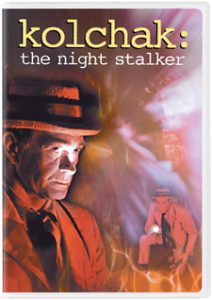Ten years ago today, I started this blog with a (shamefully positive) review of “X-Men Origins: Wolverine,” so I’m marking the anniversary with the launch of an appropriate new series: Superhero Saturdays. Fittingly, I think this first selection is a good entry point and thesis statement for the genre of superhero films.
A small big movie
Considering how much hype was behind it and how it was a big Thanksgiving blockbuster — writer-director M. Night Shyamalan having established his cachet a year earlier with “The Sixth Sense” — “Unbreakable” (2000) is a small movie. It’s the superhero origin story of David Dunn (Bruce Willis) and supervillain Elijah “Mr. Glass” Price (Samuel L. Jackson), and it studiously follows the template.
What made “Unbreakable” a rarity at the time – and what has made it age well and stand as a great entry point for the superhero genre – is that it’s rigorously set in a world where superheroes don’t exist. Heck, it’s set in Philadelphia, which further accentuates the mundanity.

“Unbreakable” (2000)
Director: M. Night Shyamalan
Writer: M. Night Shyamalan
Stars: Bruce Willis, Samuel L. Jackson, Robin Wright
Mr. Glass spells out the rules of the game throughout the movie, but because Shyamalan eschews blunt comic-book trappings, it’s not a given on the first viewing that we’re watching a superhero movie. For quite a while, we remain in the zone where there are possibly real-world explanations for what has happened.
Still a fairly new notion among mainstream pop culture as the century turned, “Unbreakable” reveres comic books as high art. (One thing that undercuts the “real world” notion is that fictional artists and writers are Mr. Glass’ reference points, but that’s a minor quibble.)
Wheelchair-bound because of his fragile bones, Mr. Glass studies the medium’s artwork and narrative structure, believing that classic comics are secretly telling true stories. One scene I found a bit blunt on this viewing is when Mr. Glass lectures a prospective buyer on how he is in an art gallery, not a toy store.
But in my 2000 review, I called this a standout scene, so I guess it played better pre-Marvel Cinematic Universe, when “comics as art” was not a widely accepted idea.
Should be boring
“Unbreakable” should be a lot more boring than it is, because the film is just about David realizing he has superpowers – and Mr. Glass, David’s son Joseph (Spencer Treat Clark) and the audience are all way ahead of him. But even on repeat viewings, it’s engrossing.
Shyamalan is analyzing what it feels like to realize you are a superhero (or to realize your calling, in a broader sense). Mr. Glass accurately psychoanalyzes David, knowing that he we will continue to wake up in the morning feeling like something is missing until he embraces his true nature.

There’s nothing unique about this among superhero films except for the fact that Shyamalan makes it the whole point of this film.
As down-in-the-dumps as David is, it’s not totally a downbeat film. There’s a Spielbergian touch to the family story, which comes to a head when Joseph plans to shoot his dad to prove he is invincible. Desperate, David gets his son to back down by threatening to leave him and his mom, Audrey (Robin Wright), and move to New York – something he had been considering anyway.
Ironically, even though “Unbreakable” is “that real-world superhero movie,” it’s the style that makes it so engaging. The dim indoor lighting, gloomy outdoor weather and Willis’ understated performance drive home David’s Everyman malaise. Mr. Glass’ comic-book-filled abode and art gallery are a colorful contrast, while also serving as Shyamalan’s love-letter to the medium.
The language of film
The director uses the language of film in showy ways: The camera slowly pans in on David and Audrey’s restaurant dinner, allowing us to soak up the woodsy wallpaper behind them even as we listen in.
The slicker-wearing David is iconically framed in an archway of a Philadelphia football stadium. The camera zeroes in on Audrey’s face as David carries her up the stairs. James Newton Howard’s score encourages us to revel in these images.
A mostly timeless film, “Unbreakable” does have one striking pre-9/11 thematic element – and I’m not talking about the string of terror attacks revealed in the final twist. Glass says “We live in mediocre times,” which he certainly wouldn’t say if the film was released (and took place) one year later.
David’s secondary superhero skill (beyond super-strength and near invincibility) is that he can see people’s past bad deeds if he makes physical contact with them, and it’s interesting to note what Shyamalan defines as bad deeds.
The first villain David defeats is a straightforward baddie who very much exists in the language of film, wearing an orange prison-style jumpsuit even while doing his janitor job.
David follows him, defeats him and rescues two kids who the man had tied up. Basic first-outing superhero stuff. Other crimes he witnesses through his visions include a racially motivated street stabbing and a jewelry store theft.
Convenient powers
I find it fascinating that a drug handoff – the dealer is played by Shyamalan himself – also triggers David’s cognition, since it’s the one vision that doesn’t have a victim.
It’s as if David’s powers line up precisely with U.S. crime laws in 2000, and it jumps out at me that this film was made before mistrust of the federal government went mainstream after its various post-9/11 legal reactions, including the buffed-up security state.
Then again, maybe Shyamalan would’ve made “Unbreakable” the same way today.
Certainly, it is unapologetically his own film: meditative, highly stylized (again, that orange jumpsuit!) and comic-book obsessed at a time when comics had only recently gone mainstream (“X-Men” came out earlier that year, but I don’t know if comic-book movies were an easy sell to studios yet, even for the man behind “The Sixth Sense”).
If there’s anything cool about “Unbreakable,” it’s accidentally so, because Shyamalan seems content to please himself (and if other people are on board, that’s a bonus).

